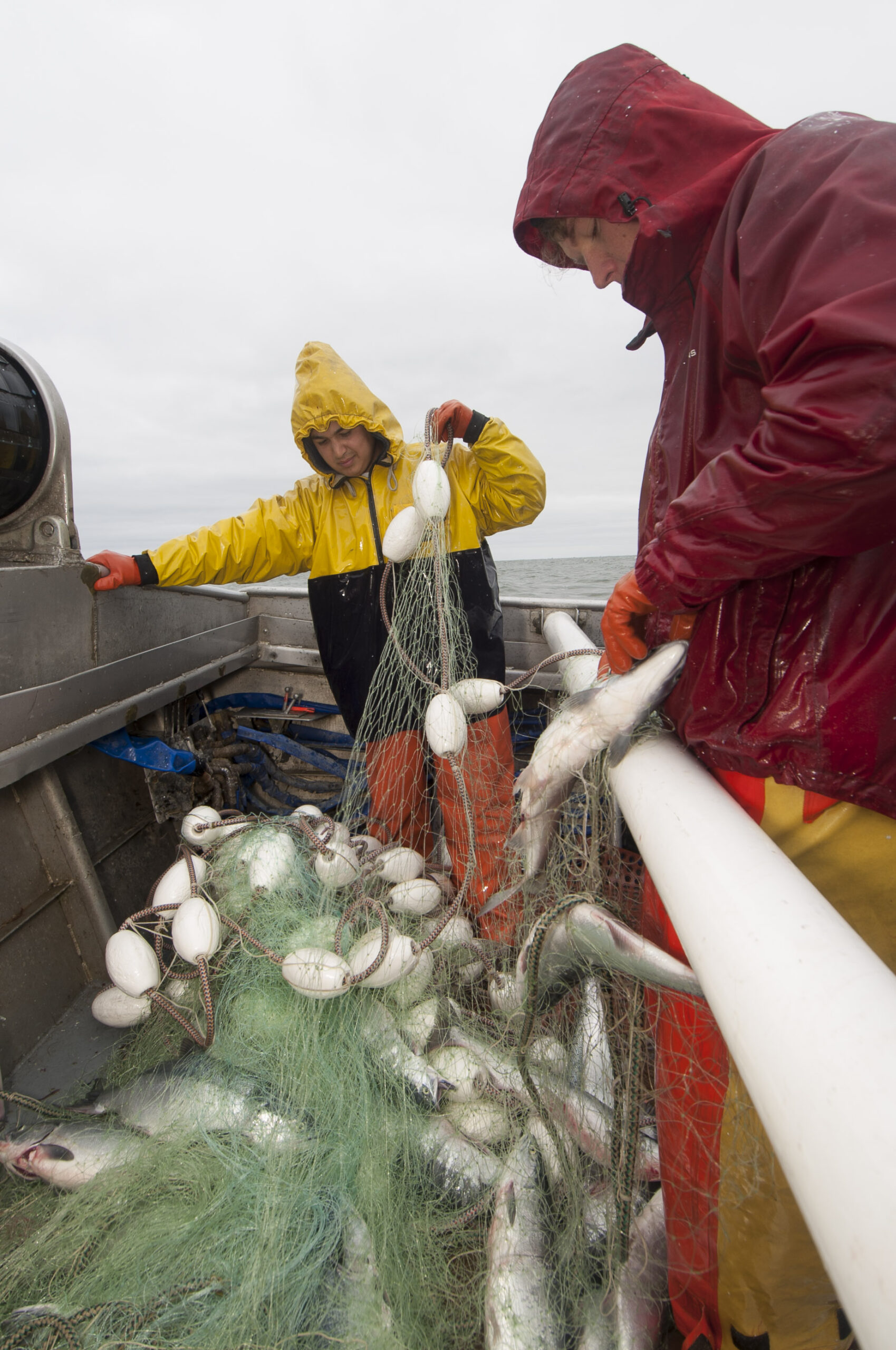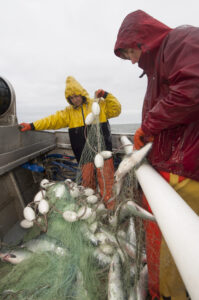
New Pebble permit requires $2 million bond
Today, the Alaska Department of Natural Resources (DNR) issued a new permit to the Pebble Limited Partnership (Pebble) that requires an unprecedented $2 million performance guarantee bond. This new one-year permit requires that Pebble complete specific reclamation work during this field season and minimize impacts to wildlife.

The Bristol Bay watershed produces some of the world’s largest runs of salmon. Photo courtesy of © Carl Johnson.
Agencies require performance guarantee bonds when there are concerns that the company will not comply with the permit conditions or applicable regulations. Until now, this kind of bond has not been required of Pebble during the decades of exploration work in Bristol Bay.
What else makes this new Pebble permit different than previous ones?
- This permit decision was 177 pages; last year’s was 39.
- This permit was issued with an 8-page decision document and a 56 page chart responding to public comments; last years’ permit was issued with a single page cover letter.
- This permit was subject to a 30-day public notice and comment period; DNR has never before had a 30-day public notice and comment period for a Pebble land-use permit.
- This permit required Pebble to obtain an insurance policy with a minimum coverage of $2 million and that named the State as an additional insured party; DNR has never before required Pebble to maintain an insurance policy.
- This permit was signed by the DNR commissioner; the other land use permits issued to Pebble have been signed by lower level employees within the agency.
“No one should be surprised about our concerns,” said Michelle Sinnott, attorney with Trustees for Alaska. “Last summer, United Tribes of Bristol Bay (UTBB) released results from its independent inspection of the Pebble site that found issues with 71 out of the 107 drill sites inspected. The state shouldn’t be left paying for the clean-up. The public and the communities of Bristol Bay should not be left dealing with and paying for problems caused by Pebble’s exploration drilling.”
After the release of the United Tribes report last November noting problems with Pebble’s compliance with its previous permit, Trustees sent a letter to DNR on behalf of Nunamta Aulukestai identifying 111 individual permit violations.
Pebble’s financial viability in question
Pebble’s financial ability to do the necessary cleanup work has been in doubt since 2015, but a research-oriented investment firm released a scathing report this February calling Pebble “worthless” and not commercially viable—further putting into question Pebble’s ability and willingness to comply with permit requirements.
The release of the investment report prompted at least 13 law firms to seek plaintiffs for litigation against Pebble’s parent company for possible violations of federal securities law. There are currently three federal securities class-action lawsuits pending against Northern Dynasty Inc.
All of this raises questions about the trustworthiness and financial stability of Pebble. DNR’s decision to require a $2 million performance guarantee for a minor permit that seeks to maintain a field camp shows that the State has these same concerns.
DNR has consistently rubber-stamped Pebble’s land-use permit applications over the three decades in which Pebble has conducted large-scale exploration activities. Under these pro forma permits, Pebble has drilled 1,355 holes in the Pebble deposit area. This exploratory drilling and associated staging activities—with some drill holes more than a mile deep and within 100 feet of water bodies—have not been properly cleaned up and are potentially harmful to Bristol Bay.
Pebble’s “care and maintenance” not compliant
For the past three years, Pebble has been operating in a care and maintenance mode, which involves storing equipment and materials, and maintaining camp facilities on public land. With exploration on hold indefinitely, the only activity currently occurring at the site involves sporadic and often incomplete attempts at cleanup of some well sites that Pebble has identified as having recurring problems.
At the end of last year, Pebble asked DNR for a new two-year permit that would allow Pebble to keep storing its equipment and materials out in the field.
For the first time in over three decades, DNR has issued a permit decision that is not a rubber-stamped authorization of what Pebble wants, and instead reflects public concerns over the proposed mine, and doubts within the financial sector about its viability.
Some of the additional permit requirements include:
- This permit includes a work plan and makes compliance with that work plan an enforceable condition of the permit; DNR has never required compliance with a specified work plan as a condition of a Pebble permit.
- The work plan requires Pebble to inspect and provide detailed information about the status of over 500 drill sites.
- The work plan also requires that Pebble fully reclaim and abandon 138 drill sites.
- This permit specifically states that exploration drilling is not authorized and even titles the permit as “for care, maintenance & reclamation; last years’ permit was titled as “for hardrock exploration & reclamation,” even though the plan of operations for the year did not identify any exploration plans.
- This permit includes a special stipulation prohibiting activity within Mineral Closing Order 393; DNR position in the past was that a mineral closing order did not prohibit mineral exploration, water uses, or access to mining claims – previous Pebble permits did not include this stipulation.
Trustees defends right of Alaskans to have a voice
Nearly two years ago, the Alaska Supreme Court ruled that Alaskans have a right to know about and have a say in how state land is used for a project like Pebble. This is the first miscellaneous land use permit decision for the Pebble project that has been subject to public notice and comment. Alaskans made their voices heard and DNR is starting to listen.


